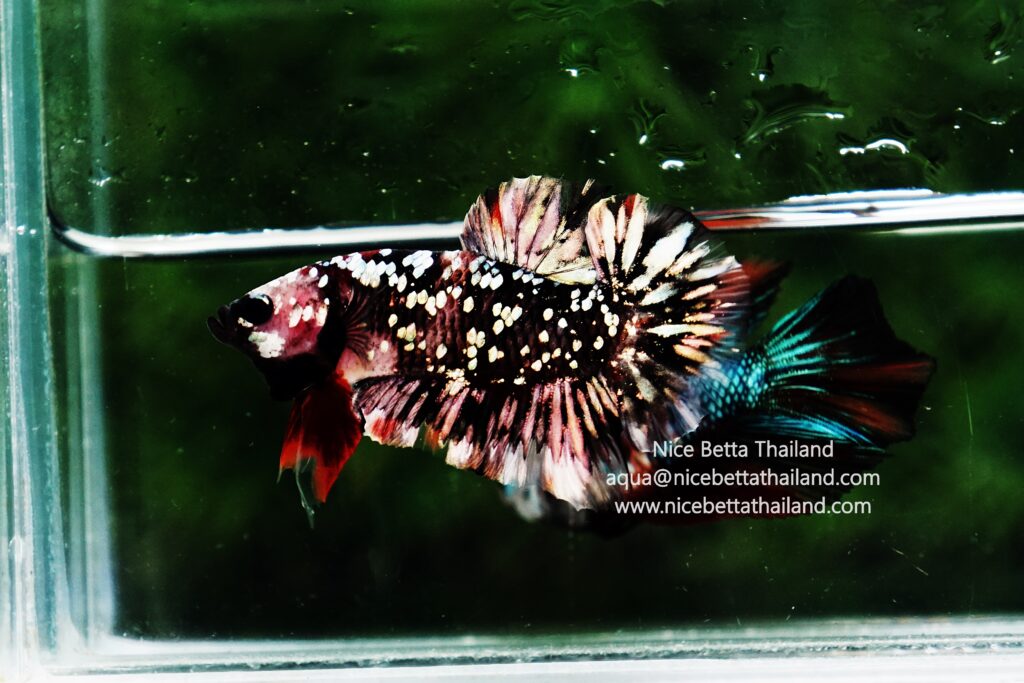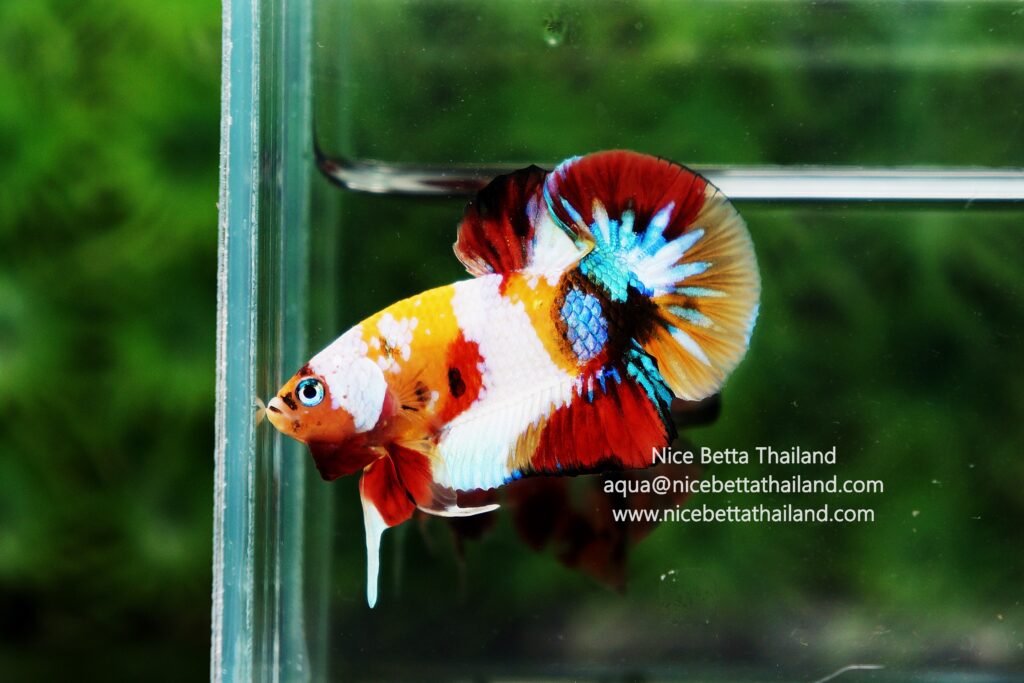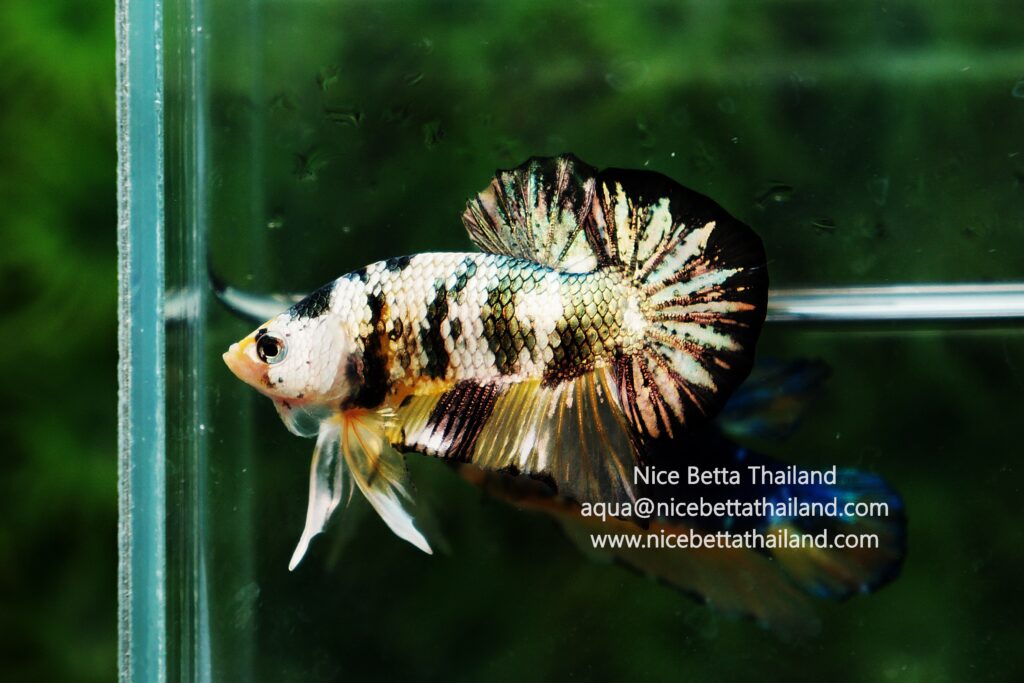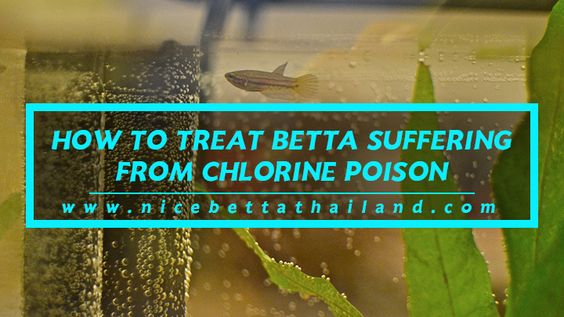Chlorine poison in water causes a condition known as acute necrosis in fish. Chlorine kills living cells, most often damaging fish’s sensitive gills as well as the skin that covers their entire bodies. Betta fish placed in chlorinated water will begin to suffer from respiratory problems and may suffocate, unable to breathe properly.

Identifying Chlorine-Poisoned Fish
Fish suffering from chlorine poisoning may appear pale, may look as if they are covered in mucus and may develop red areas on their bodies. Affected fish may swim erratically or hover near the top of the water, struggling to breathe.

Treatment of Water and Fish
You need to remove your fish from the tank immediately if you suspect your fish are suffering from chlorine poisoning. Set up a second completely clean and fully functional aquarium. Fill the new tank with water that does not contain chlorine. Ideally you should use treated tap water, reverse-osmosis or distilled water. If you use reverse-osmosis or distilled water, you will have to add mineral and nutrient supplements to the water if you want your fish and plants to survive in it long-term; pure water has had almost all nutrients removed from it and therefore does not provide your fish with everything they need to survive.
The most important thing is to get your fish out of the chlorinated water as quickly as possible. Use a fish net to scoop each fish out of the toxic water and to gently place them into the new tank. No known medical treatment can repair the damage done by chlorine; you must separate the fish from the source of toxicity and give the fish time to heal, if they are able to do so. Fish who have been in chlorine water for long periods of time almost always wind up dying as a result of the damage the chlorine does to their gills.

Preventing Chlorine Poisoning
Never use tap water in your fish tank without first treating the water with chemicals that neutralize the chlorine in the water, or by boiling it or aerating it with plenty of oxygen. If you use a chlorine-based product such as bleach to clean and disinfect anything you use in your fish tank, you need to make sure you thoroughly rinse those objects in clean water to prevent introducing chlorine into your tank. Also, make sure to buy aquarium test strips that allow you to test your tank for chlorine. Regular chlorine testing will help you identify problems in your tank. If your tank has too much chlorine in it, you will need to completely empty the tank and perform a full cleaning on it before you refill it with properly treated water. Be sure to rinse all tank accessories and equipment thoroughly before returning them to the tank.
What is Chlorine?
Chlorine is a chemical element with the symbol Cl and atomic number 17 in the periodic table. It is a member of the halogen family and occurs both naturally and in compounds that are extremely dangerous to all types of fish.
Chlorine Poison Summary
Betta Fish that are poisoned by chlorine will have difficulty breathing, their cheek pouches will open and close quickly, and may die if not treated in time. The main cause is from tap water that has high chlorine or from changing the water incorrectly. The treatment method is to move the fish to clean water that is free of chlorine immediately. You may add a dechlorinator or scoop the water and leave it for 1-2 days before using to allow the chlorine to evaporate. Prevent this problem by checking the water before use or choosing a quality water filter system.
Looking for Rare betta fish?
If this article Chlorine Poison was useful to you You can leaving a 5-star reviews for It’s an encouragement. For us make encourage us in our research. Research information about betta fish for to present useful information further

Also we have group talk about betta fish for sale and share any new tip take care information on Web3 socialFi group

Right now we have betta fish doctor help every bettas lover by top breeder in Thailand to cure or share more tip on Animalverse social
If your bettas fish sick or need tip to treat help or join event prize with AVC Token
Let’s join the group many top breeder will help to answers in betta fish community
More tip :
Learning Your Medications for Bettas
5 steps for keeping the betta environment healthy
How to Keep a Betta Fish Alive for 4 Years
15 Common Betta Fish Diseases Prevention and Treatment
All of Betta Fish A Guide on Patterns, Color in the world
The most expensive betta fish in the world.






